Sports
/ArcaMax
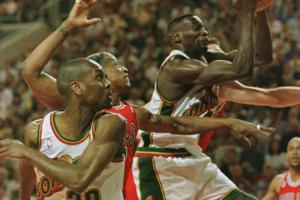
Shawn Kemp, former Seattle Sonics star, sentenced to home monitoring
TACOMA, Wash. — Shawn Kemp, who was one of the most popular athletes in Seattle in the 1990s when he played for the Sonics, was sentenced Friday in Pierce County Superior Court to 30 days of electronic home monitoring for second-degree assault.
Kemp must submit to home monitoring within two weeks and will also serve one year of community ...Read more
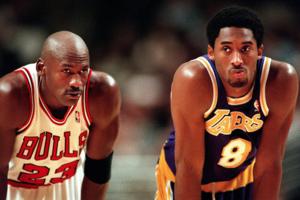
Unique Kobe Bryant-Michael Jordan card set to break price record on Mamba's birthday
LOS ANGELES — The record for the amount paid for a basketball card is about to be broken by Kobe Bryant on what would have been his 47th birthday ... with some help from his "big brother," Michael Jordan.
The 2007-08 Upper Deck Exquisite Collection Dual Logoman Autographs card featuring Bryant and Jordan is up for bid online at Heritage ...Read more
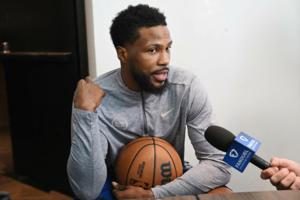
Malik Beasley's lawyer says player is no longer target of FBI gambling investigation
DETROIT — Former Detroit Pistons guard Malik Beasley is no longer the target of an FBI investigation focused on wire fraud, gambling and prop bets, opening a potential path to return to the National Basketball Association, his lawyer told The Detroit News on Friday.
The lawyer's declaration of a decision by federal prosecutors in the Eastern ...Read more

Malik Beasley exonerated in gambling probe, but at what cost for the former Lakers guard?
Players placing bets on games is taboo. Innumerable sports fans were educated on this point in 1989 when hits king Pete Rose received a lifetime ban from Major League Baseball for betting on games while he was a manager.
Or upon watching "Eight Men Out," the 1988 film about MLB's Black Sox Scandal in which eight members of the Chicago White Sox...Read more

The best backcourt in all of college basketball? Not so fast, Kentucky.
LEXINGTON, Ky. — Earlier this summer, Jaland Lowe was listening intently to a question related to Kentucky’s backcourt for the 2025-26 season.
It clearly didn’t take Lowe — a veteran point guard with plenty of experience talking to reporters — long to figure out which way this particular question was going. Before some variation of �...Read more
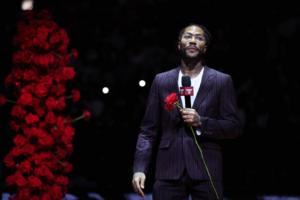
Bulls will retire Derrick Rose's No. 1 jersey in a Jan. 24 ceremony at the United Center
CHICAGO — The Chicago Bulls set a date to loft the jersey of hometown star Derrick Rose into the United Center rafters.
The team announced Thursday that Rose’s No. 1 jersey will be retired Jan. 24 in a ceremony after a home game against the Boston Celtics.
A Chicago native who won two state titles with Simeon, Rose reignited hope in his ...Read more
Kelsey Plum sinks buzzer-beater as Sparks win despite Paige Bueckers' historic night
LOS ANGELES — It was a night when defenders draped over Kelsey Plum, her path to the rim often crowded. And when she turned to the officials for relief, the whistles were elusive.
But when it mattered most — that being with 3.3 seconds to play and the Sparks trailing by one — Plum lowered her shoulder and slipped between swiping arms and ...Read more

Celtics star Jaylen Brown's father arrested on attempted murder charge in Las Vegas: reports
BOSTON — Celtics star Jaylen Brown’s father has been arrested after he allegedly stabbed a man during a scuffle in a Las Vegas parking lot, according to jail records obtained by local news outlets.
Quenton M. Brown, 57, has been charged with attempted murder in connection with the alleged stabbing that unfolded at a Las Vegas park Wednesday...Read more
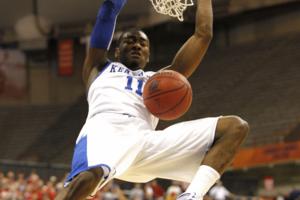
Mark Story: It is time. Why Kentucky men's basketball should retire John Wall's jersey now.
LEXINGTON, Ky. — Fifteen years after John Wall last wore Kentucky blue and white in a game, his lasting impact on the UK men’s basketball program was on display this week on the social media platform now known as “X.”
Wall announced Tuesday that he was formally retiring from professional basketball at age 34. In the aftermath of the ...Read more
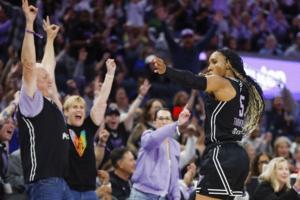
How do injury-plagued Valkyries move forward with nine games left?
SAN FRANCISCO — With nine games remaining, the Valkyries have found a way to be in playoff position without consistency in their lineups.
When multiple players left for the EuroBasket tournament in June, Golden State stayed afloat. When injured All-Star Kayla Thornton was ruled out for the rest of the season last month, the Valkyries stepped ...Read more

Celtics star Jayson Tatum shares update on Achilles as 'tedious' rehab progresses
BOSTON — In his first public comments since rupturing his Achilles in May, Jayson Tatum shared a positive update on his arduous rehab process.
The Celtics superstar said in a video posted on the NBA’s official social media channels that he’s making progress in his recovery, noting he’s no longer wearing a walking boot.
“Rehab is, it�...Read more
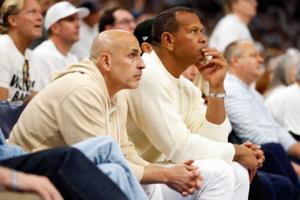
New Timberwolves and Lynx owners lay off dozens of business-side workers
MINNEAPOLIS — Since becoming controlling owners of the Timberwolves and Lynx in late June, Marc Lore and Alex Rodriguez have been evaluating the business side of the franchises.
This week, that evaluation resulted in layoffs of what a source said were roughly 35 employees as part of Lore and Rodriguez’s restructuring of the franchises.
The...Read more

Sixers' Paul George is the last man standing from the 2010 NBA draft
PHILADELPHIA — John Wall officially announced his retirement from the NBA on Tuesday, leaving Paul George as the last man standing from the 2010 NBA draft.
George has played in 908 career games, averaging 20.6 points, 6.3 rebounds, and 3.7 assists across 15 NBA seasons with four different teams.
George of course isn’t the league’s oldest...Read more

John Wall makes retirement official, will join 'NBA on Prime' broadcasting team
In his prime, John Wall was a rocket, a supremely talented point guard whose speed, explosiveness and star power made him the first pick in the NBA draft, a five-time All-Star and a fan favorite of the Washington Wizards, the team for which he delivered nearly all his heroics and highlight reels.
At the end, Wall was in uniform and running the ...Read more
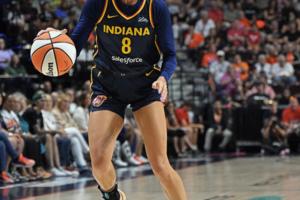
Sophie Cunningham even wants her mother to stop blaming Bria Hartley for her season-ending injury
Indiana Fever star Sophie Cunningham doesn't believe a dirty play led to her season-ending knee injury, and she wants everyone to stop accusing Connecticut Sun guard Bria Hartley of intentionally hurting her.
That includes Cunningham's own mother.
Cunningham addressed the matter on an episode of her "Show Me Something" podcast that dropped ...Read more
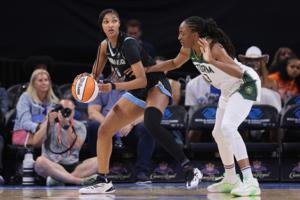
Angel Reese is back with the Sky. What does that mean for the rest of the season?
CHICAGO — Angel Reese was cleared to play for the Chicago Sky on Tuesday night against the Seattle Storm at Wintrust Arena after missing nine of the last 10 games with a lower back injury.
The forward logged 19 points in 26 minutes, slightly exceeding a 24- to 25-minute playing time restriction initially set before the game. Reese was the ...Read more

Ex-Heat employee pleads guilty in stolen memorabilia case
A former Miami Heat security officer and retired police officer accused of stealing millions in team jerseys pleaded guilty Tuesday to transporting and transferring stolen memorabilia across state lines, the U.S. Attorney’s Office announced.
Marcos Tomas Perez, 62, “stole hundreds of game-worn jerseys and other valuable memorabilia ...Read more
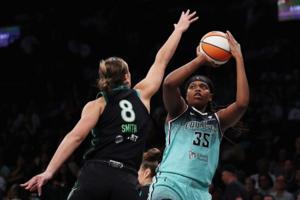
Sabrina Ionescu's dagger, Jonquel Jones' double-double help spoil Lynx's sweep of Liberty
NEW YORK — The 2025 Minnesota Lynx revenge tour was in full effect entering Barclays Center: last year’s WNBA Final runner-ups flaunted a league-best 28-5 record and remained undefeated (3-0) against defending champion Liberty.
And Tuesday night was a perfect opportunity for the Lynx to send a message that 2025 is their year. A 4-0 regular-...Read more
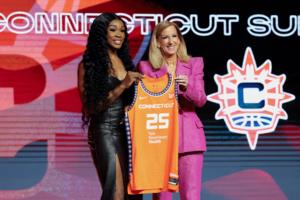
Sun sale in limbo as new report claims WNBA now wants to buy team, and for less money
HARTFORD, Conn. — The ongoing saga of the Mohegan Tribe’s attempt to sell the Connecticut Sun took another turn on Tuesday when ESPN reported that the WNBA is attempting to counter the two offers currently on the table from prospective ownership groups in Boston and Hartford.
According to the ESPN report, the WNBA opposes a move to either ...Read more

Why some Warriors' West Coast games will start late this season
SAN FRANCISCO — A change to the NBA national broadcast ecosystem will have an impact on the Warriors’ 2025-26 season.
Golden State will have three Tuesday home games – matchups against the Clippers on Oct. 28, Oklahoma City on Dec. 2 and Portland on Jan. 13 – start at 8 p.m. Pacific time
That’s an hour later than usual for local ...Read more
Popular Stories
- The best backcourt in all of college basketball? Not so fast, Kentucky.
- Bulls will retire Derrick Rose's No. 1 jersey in a Jan. 24 ceremony at the United Center
- Malik Beasley exonerated in gambling probe, but at what cost for the former Lakers guard?
- Unique Kobe Bryant-Michael Jordan card set to break price record on Mamba's birthday
- Shawn Kemp, former Seattle Sonics star, sentenced to home monitoring





